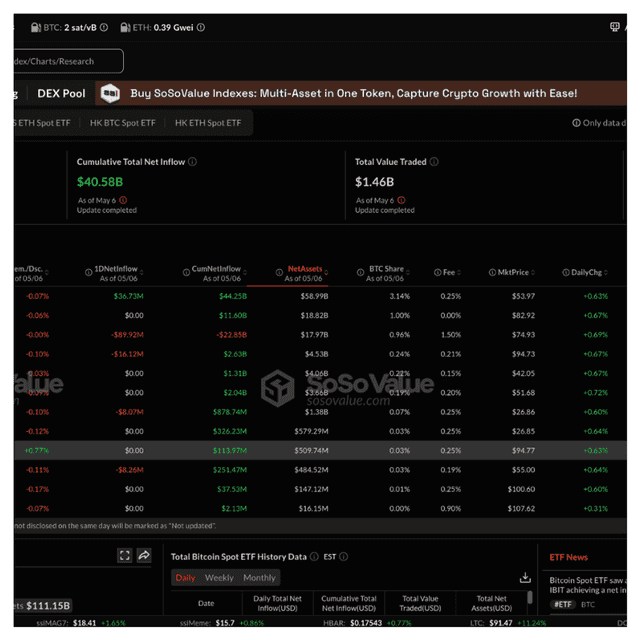2025-05-08 08:00
BLOCKMEDIA

Image source: Block Media
**Dollar's Global Dominance Faces New Challenges Amid Massive Sell-Off Warning**
The U.S. dollar, a cornerstone of the global financial system, is encountering new hurdles as the increasing strength in Asian currencies and rising trade tensions impact its dominance. Analysts caution that this scenario could precipitate a historic $2.5 trillion dollar sell-off, causing disruptions in asset markets globally.
**Asian Currencies Rally, Dollar Slides**
The Bloomberg Dollar Spot Index has plummeted nearly 7% since the year began, its most significant drop in two decades. From its peak in February, the index has fallen around 8%, with the dollar's weakness particularly evident against major Asian currencies recently.
The surge in Taiwan’s dollar, particularly intense since early May, has catalyzed a rise in regional currencies. A report by Eurizon SLJ Capital suggests that this synchronized appreciation could lead Asian central banks to form informal monetary agreements.
Eurizon SLJ Capital warns that the unwinding of Asian dollar reserves accrued from years of trade surpluses with the U.S. might trigger a "snowball effect" of massive selling, estimated at $2.5 trillion. This shift could be profound as Asia-based exporters and investors, traditionally strong dollar accumulators, reassess their strategies amidst trade frictions.
**The U.S.-Asia Trade Tensions: Dollar Dilemma**
The tariff-centered trade policies of the Trump administration threaten to disrupt global trade norms, prompting countries holding substantial dollar reserves to divest. Experts argue that this policy inadvertently undermines confidence in the dollar as the primary reserve currency.
“The over-accumulation of dollars in Asia—estimated around $2.5 trillion—poses a significant risk of steep declines against regional currencies,” noted Eurizon SLJ Capital's report. Much of these reserves are unhedged long positions, making them particularly susceptible to volatility.
If countries like China, Taiwan, Malaysia, and Vietnam hedge against a weaker dollar or repatriate funds, the effects could be significant, potentially causing a ripple effect on the dollar’s value.
Investors are increasingly cautious about U.S. trade protectionism, fearing that the dollar might lose its appeal as a safe-haven currency. “The dollar's unique status is threatened as global markets reassess U.S.-centric trade priorities,” the report highlighted.
**The 'Dollar Smile' Theory Put to the Test**
Stephen Jen, a chief market strategist at Eurizon SLJ Capital, has previously observed how Chinese firms responded to Federal Reserve rate hikes by selling dollar-denominated assets. He anticipates a similar pattern might recur, potentially driving nearly $1 trillion back into China and further pressuring the dollar.
Jen highlighted the vulnerability of unhedged long dollar positions, which could hasten corporate and governmental reallocations of dollar-linked holdings. "The dollar is at risk due to this imbalance," he remarked, urging a reevaluation of its role in global portfolios.
**Fragmentation of the Global Monetary System**
Warnings about the dollar’s vulnerability have been a constant concern even before Taiwan's recent currency surge. At an April seminar by the Peterson Institute for International Economics, experts analyzed U.S. trade policies, noting their potential to fragment the global monetary system.
Morris Obstfeld, a senior fellow at the institute, indicated that the U.S. is shifting from multilateral trade cooperation to economic coercion, straining alliances. "Efforts to advantage U.S. interests exclusively, such as pressuring allies to buy U.S. Treasuries or manipulating exchange rates, weaken the dollar's global standing," he asserted.
Concerns over a weakened dollar extend beyond geopolitics. Warwick McKibbin, another seminar participant, projected that existing tariffs could reduce the U.S. economy by over 1% by 2026. With retaliatory actions and diminishing confidence in the dollar, the projected GDP decline could rise to 2.25%.
McKibbin also cautioned that a 1% increase in the risk premium from eroded global confidence could lead to a 15% drop in the dollar's value.
**Wall Street Stays Watchful, But Diverging Views Persist**
Wall Street is divided on the dollar’s future. While Treasury Secretary Scott Besant expressed optimism at a recent Milken Institute conference, citing U.S. assets as top investment destinations, market indicators paint a different picture.
Besant commented, “Improving trade deals may not be smooth, but U.S. security and economic values will prevail.”
In contrast, JP Morgan’s Eirinden Sandlia pointed to significant disruptions caused by the dollar's recent decline against Asian currencies. He predicts that if regional currencies continue to escalate, Asian central banks might convene to manage currency valuation discrepancies.
The Chinese yuan is particularly watched as an indicator for further regional currency movements.
As policymakers and investors navigate this uncertain terrain, all eyes are on Asia, whose economic developments may dictate the dollar's future trajectory.
View original content to download multimedia: https://www.blockmedia.co.kr/archives/903678




